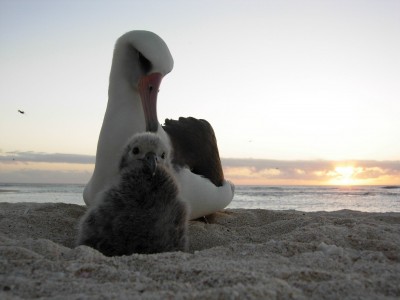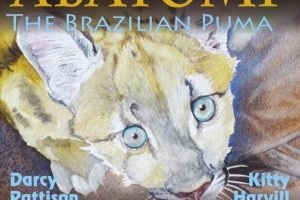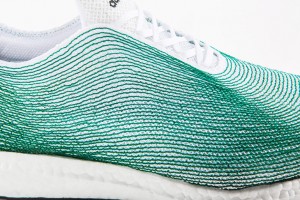BY MOLLY VINCENT, GUEST STUDENT BLOGGER

Molly Vincent
When it comes to using plastic, kids and adults can help the environment. And there are several resources at your disposal–from hands-on activities to educational documentaries.
Plastic Paradise: The Great Pacific Garbage Patch is a compelling educational film that makes viewers want to make a difference. Director/writer Angela Sun is also an environmentalist with a particular interest the world’s oceans. Growing up in California, she realized just how much debris is really in the water. Sun made a journey to the Midway Atoll, an area in the middle of the Pacific Ocean that is located halfway between the West Coast of the U.S. and the East Coast of Japan. A “garbage patch” exists in this area that some people claim is two times the size of Texas, although it’s never been scientifically measured as such.
WHY WE NEED TO REDUCE OUR PLASTIC CONSUMPTION
Turtle entangled in net
Plastic in the Pacific Ocean kills marine birds and mammals. Bottles, cups, crates, shoes, toys, and even computer monitors all made of plastic live in this habitat. Large pieces of plastic that end up in the ocean photo degrade into smaller pieces that animals use for their next meal. While plastic is killing off animals, the problem is also passed on to us. When we eat fish, we run the risk of digesting harmful plastic chemicals.
HOW PLASTIC AFFECTS US AND MARINE LIFE
Plastic contains several hazardous chemicals: PAH (polycyclic aromatic hydrocarbon), PCB (polychlorinated biphenyl), and DDT (dichlorodiphenyltrichloroethane) to name a few. PAH, an oil and coal byproduct, can cause birth defects, childhood asthma, premature birth, behavioral problems, and heart malfunctions. PCB is a coolant/insulator that can cause cancer, miscarriage, low sperm count, premature birth, and cognitive impairment. DDT is a pesticide that causes cancer. Plastic nets found in the sea are another hazard for sea animals since the nets can trap and entangle them, killing the animals. While Plastic Paradise gives a grim, yet realistic and moving, outlook on the current states of many of the world’s oceans, there is still hope.
HOW YOU CAN GIVE THE OCEAN A VOICE
In addition to watching Plastic Paradise, there are numerous ways you can get involved:
-
Albatross and chick
Allow second-graders to be hands-on in their efforts to protect the ocean! Show young kids the hazardous effects of plastic in the oceans through two marine debris projects. Humans are very connected and through two projects, students can connect their lives to animal lives. The first project demonstrates an animal’s entanglement in marine debris. The second observes the ingestion of marine debris by teaching kids how plastic in the oceans have a deadly effect on sea life.
- For middle-school students, a great interactive game allows them to virtually clean up Kure Atoll by collecting debris in a set time limit. This helps kids understand the way debris affects the earth and get them to act off the computer.
- High school students can see the detrimental effects of plastic ingestion by virtually dissecting Laysan albatross. Students can see how animals mistake plastic for food and the detrimental effects plastic has on sea life.
- Perform these Trash Traits experiments to examine whether trash floats, blows in the wind, or washes away. Analyze the effects of characteristics on marine debris.
- The Litter Matching Game gets kids to match descriptions of marine debris to their images.
Beach litter
- AllTangled Up examines and simulates wildlife entanglement through rubber bands.
- A Degrading Experience allows learners to experiment with how different types of marine debris degrade in the sea.
FUN OCEAN INFO SITES
- Visit Azula, an environmental website, with news on animals, humor, lifestyle, news, and video.
- The Ocean Service website finds fish hotspots and maps coral reefs. The website also maps the Caribbean’s sprawling coral reef ecosystem.
The most important lesson conveyed in the documentary and the activities is that there is still a bright future for the ocean. Despite the trash in the ocean, everyone can make an impact for the future by rethinking plastic and making sure that trash doesn’t hit the water in the first place.








Leave a Reply
Your email is safe with me.